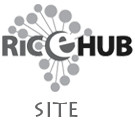- Introduction
- Executive Summary
- The Goronyo Rice Innovation Platform
- Inception workshop
- Diagnostic survey to identify the Strengths, Weaknesses, Opportunities and Threats (SWOT) of the rice value chain in the Middle Rima Valley Irrigation Scheme (MRVIS), Gorony
- Roles of value chain actors
- Establishment of Goronyo Rice Innovation Platform (GRIP)
- Collaboration with regional project coordination unit to provide ICT based platform for stakeholders in the value chain to share and exchange information
- Level of involvement of actors especially farmers during value chain fixing
- Rice Production and Productivity in Goronyo
- Rice Post-harvest, Processing and Marketing in Groronyo
- Rice husk utilization
- Training Materials
- Technical drawings of locally fabricated equipment and stoves
- Value Chain Research in Goronyo
- Experience from other hubs
Farmers are mainly involved in production and marketing of grain and constitute most actors in the MRVIS. The four most important strengths are absence of permanent severe diseases for rice plants, profitability of rice farming, easy access to land and high motivation of farmers due to government interventions. The four most important weaknesses are lack of capital for expansion, difficulties in timely accessing inputs (fertilizer and quality seeds), poor water management, difficulty in accessing machine. Farmers were generally not implementing good agricultural practices.
Rice farming activity generates an average of 475,000 Naira per hectare for a gross profit of 129,056 naira for those who use tractor for land preparation and 121,556 Naira for those whose use ploughs. The respective profitability ratios are 37.31% for users of tractors and 34.39% for users of ploughs.
Parboilers are involved in parboiling and are the second most important group of actors and dominated by small scale artisanal women rice processors. Their four most important strengths were good health, existence of small capital, availability of raw material and long experience in parboiling. Their four most important weaknesses were nonexistence of modern parboiling and milling equipment, nonexistence of credit source, lack of knowledge of improved practices, lack of standardization of measure for rice marketing.
Parboilers mentioned that they get a gross profit of 500-800 naira/ bag (85kg). In contrary, the profitability account elaborated showed that they do not get any profit from parboiling activity but rather a loss. Loss rate was -27.24% or - 21.83% when parboiler’s labour is charged or not charged respectively.
Marketers are involved in buying and selling of paddy or milled rice. The four most important strengths of marketers were profitability of the business, existence of customers, government credit facilities, permanent availability of suppliers. The most important weaknesses are poor organization of marketers, lack of capital, poor contractual arrangement and absence of storage facilities.
Millers may buy, mill and sell own paddy or provide milling services to other actors. This value chain segment was very weak in the study site. The three most important strengths were existence of raw material, existence of market. The three most important weaknesses were low capacity of milling system (Engelberg type mill), poorly adapted mill resulting in poor milling quality, absence of electricity to run modern milling systems.
Mechanical Service Providers supply on-farm, harvesting and postharvest mechanical services to other value chain actors. This most important strength was the existence of demand and some improved equipment such as power tiller while the four most important weaknesses were negative impact of dried soil limiting the performance of power tiller, lack of contractual arrangement to provide service in credit, lack of improved equipment and high cost of hiring a tractor.













